MARIANI’SVirtual
Gourmet
June
9, 2013
NEWSLETTER

❖❖❖
THIS WEEK
SUMMER READING LIST
By John Mariani
NEW YORK CORNER
Aureole
by John Mariani
❖❖❖
by John Mariani

The
pleasures of eating and drinking and traveling
well make for good reading during the summer,
not least at the beach when you can pick out a
few recipes, then go shopping and cook them up
that evening. Here are books that seem
particularly valuable this season. Note well
how many are from smaller, more independent
publishers at a time when the big guns seem to
have run out of new ideas in favor of
celebrity cookbooks cobbled together by
assistants.
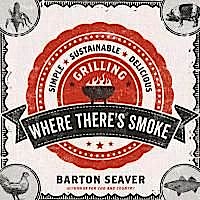
Where There's Smoke: Simple, Sustainable, Delicious Grilling by Barton Seaver (Sterling Epicure, $30). Before everyone else jumped on the farm wagon, Barton Seaver was preaching the wisdom of sustainable food, and doing so with a Southern style that also prefigured what has now become a fad. This volume, his second, is mostly devoted to cooking on the grill, but there's a whole lot more here, from wonderful salads and vegetable dishes like autumn caponata to pickled smoked peaches and preserved lemons. He's even got a recipe for smoked pork ribs he calls "blasphemy" because they don't take 24 to smoke and grill. His notes on the numerous varieties of dry woods that add specific flavors to food is a bonus.

New York à la Cart: Recipes and Stories from the Big Apple's Best Food Trucks by Alexandra Penfold and Siobhan Wallace (Running Press, $18). I'm not sure what is better about this book--the recipes or the stories, for the former show the extraordinary range of NYC's food truck cookery while the latter put you in touch with the kind of lovably eccentric cooks who go this route, from NYC's Extravaganza Cart to Miss Softee, whose ice cream truck makes everyone happy to see owner Chrissy Michaels every day. It's amazing how people come up with single-minded ideas like the Cinnamon Snail, the Kimchi Taco Truck, Hallo Berlin, Donatella's Meatball Wagon, Schnitzel & Things, and so many more, and the authors give a thorough history of the cart venues in each borough. And then, there are those recipes!

The Audacity of Hops: The History of America's Craft Beer Revolution by Tom Acitelli (Chicago Review Press, $19.95). Hard to believe that a half-century ago there was only one true craft brewery in the U.S.--Anchor Brewing in San Francisco. Now there are more than 2,000, and Tom Acitelli chronicles their rise to prominence and challenge thrown at the bland American corporate beer conglomerates. Told with affection and solid scholarship, this is a tale of feisty entrepreneurs and suds heads, often pitted against companies at first scoffing then terrified of the increasing market share stolen away from brands like Budweiser and Miller. It's doubtful we will need another book--maybe just an update in ten years--of this thoroughly researched volume,a classic of its subject and form.
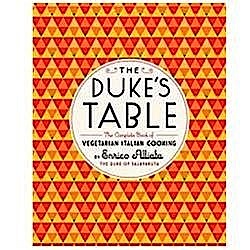
The Duke's Table: The Complete Book of Vegetarian Italian Cooking by Enrico Alliata (Melville House, $40). Though vegetarianism has a long history and some impressive crusaders, the shrill tone of the vegan branch these days makes this book all the more appealing for its sensible, expert, Italian-style treatment by Enico Alliata (1879-1946) of Sicily, an island far richer in grains and vegetables than in meat, although seafood abounds in the Mediterranean. The Duke's own table, based on healthfulness, was always a feast, even when all vegetarian, and he had no problem using good amounts of eggs, butter and cheese to enrich a dish, including ice creams and parfaits for dessert. With 1,000 recipes at hand, you are unlikely ever to dine without a delicious veg alternative to the proteins on your plate, and for vegetarians, this book will keep them busy for years, working their way through dishes like macaroni timballo falso, Neapolitan soup with fried dumplings, red risotto, and vegetarian "foie gras" made with ricotta and black truffles.
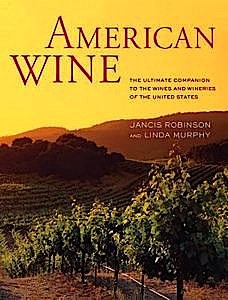
American Wine: The Ultimate Companion to the Wines and Wineries of the United States by Jancis Robinson and Linda Murphy (U. of California Press, $50). Jancis Robinson is easily our most respected--and indefatigable--wine writer, and here, after several editions of The Oxford Encyclopedia of Wine, she, with the unflagging assistance of Linda Murphy, gives us the most thorough and up-to-date examination of where American viniculture has been and is headed, without simply tossing together thousands of boring wine notes. The brief, to-the-point profiles of winemakers, the descriptions of the AVAs, and the much-needed information on emerging regions like Georgia, Delaware and other states is invaluable. It's also a beautifully put together book, as one has come to expect from the U. of California Press.
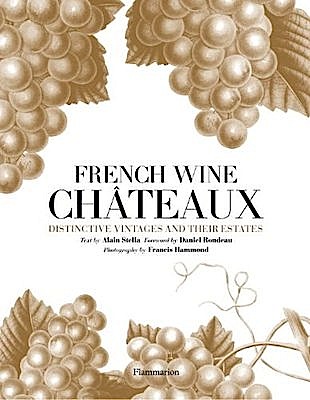
French Wine Châteaux: Distinctive Vintages and Their Estates by Alain Stella (Flammarion, $85). Were this only a gorgeous evocation of French wineries and dining rooms, complete with a few recipes for dishes like flaked crab and avocado tarta with slow-roasted tomatoes and apples, it would make a fine gift book for your enophile friend. But here is a volume that proves that Google and Wikipedia will not soon be putting printed books out of business: it is too rich a fount of personalized information, appreciative prose, and an understanding of the French soul, particularly when it comes to wine. There are no cowboys here, no garagistes, no consultants pushing up alcohol levels. This is a book on the grand tradition of French winemaking in all its glory and hard work that has provided the world a standard by which to judge all that has come afterwards.

Honey, Olives, Octopus : Adventures at the Greek Table by Christopher Bakken ( U. of California Press, $34.95). It is hardly at all odd that it should take a foreigner to express the beauty and history of a culture like Greece's, where so much has been left to ruin like its Hellenic monuments. American Christopher Bakken, who spent many years in Greece and taught there, gives us a sweet and loving portrait of a culture, primarily through its food. He writes beautifully--"If Asia Minor is a giant, then Chios is his severed left ear"--and you can sense he labored over every word to describe the exact look, taste and smell of fresh olive oil or aged cheese. There is singing and dancing here, and exhilaration and exhaustion, as much a fine travel narrative as a food book.
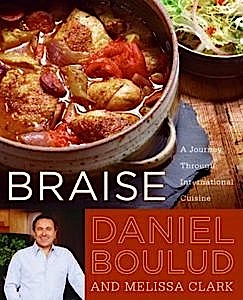
Braise by Daniel Boulud and Melissa Clark (Ecco Books, $19.99). One comes to expect Daniel Boulud to be, if not the last word on a subject, at least one of the most authoritative, and his new book Braise, with food writer Melissa Clark, capitalizes on that precision of French technique Boulud first learned then perfected over decades, making him one of the world's most revered chefs' chefs. Braising liquid is in his blood, so that just reading the names of dishes--"Pork and Swiss Chard Caillettes with Tomato Sauce," "Royal Shoulder of Lamb with Saffron, Raisins, and Pistachios" and "Ham Hocks in Jamaican Jerk Sauce" should send you hurtling to the market and into the kitchen. Good, too, is his inclusion of offal like tripe and hearty items like stuffed pig's foot. You can be sure all these recipes will work and delight any who attempt them.
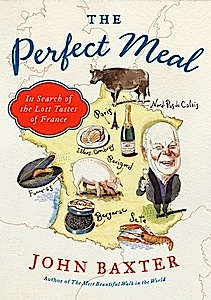
The Perfect Meal: In Search of the Lost Tastes of France by John Baxter (Harper Perennial, $14.99). The chronic lament about France losing its gastro-soul has gone on for decades now, even though there is not a village in Provence where you still can't get the most beloved old regional dishes. But John Baxter, concentrating here on Paris, is no whining nostalgist. He is a man of great bonhomie and good humor, daring to prepare a "perfect" 12-course meal of old-fashioned French cuisine that includes lamprey eels and a whole roasted ox. This is not, however, really a cookbook but a revelry told with engaging passion for the exotic background of a dish or an ingredient, as when he tells us "Lampreys were believed to send women into sexual frenzy like the one that possessed the mythological nymph Callisto," who, after a hearty meal of eels and some lovemaking with Zeus, was turned into a bear. This is the book you keep in the kitchen, by your bedside, even in the bathroom, to peruse slowly and greedily.
by John Mariani
AUREOLE
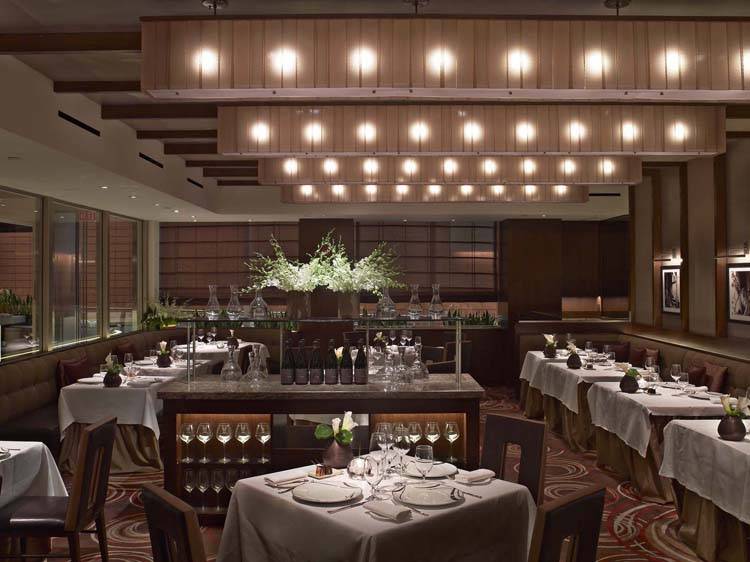
135 West 42nd Street (off Sixth Avenue)
charliepalmer.com
The
choice of a restaurant for one's anniversary dinner is
not one to be taken lightly. New hot spots are out
of the question; loud restaurants are, too; places where
the owner or chef is likely to blather on all evening
won't work. We wanted a place where the food would
be enticing, impeccably prepared, and in a style we had
come to expect and loved. The wine list would be
factored in, as would the service staff, which should
never be intrusive and never far away. Our list of
prospective candidates got narrower and narrower.
Our choice was Aureole, now
celebrating its 25th anniversary in NYC, four years in
its second location, on one of the less "naughty, bawdy,
gaudy, sporty" stretches of 42nd Street, just west of
Bryant Park, in the Bank of America Tower
Building. The address was right: the nexus of
Manhattan. The style of cuisine was what we wanted: a
long legacy of beautifully conceived and prepared French
and American cuisine via chef-restaurateur 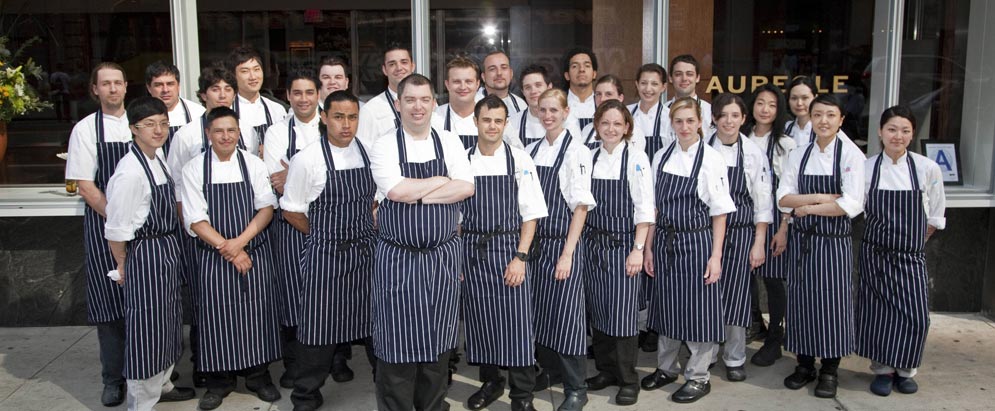 Charlie Palmer,
as interpreted by chef Marcus Gleadow-Ware (right, center).
The
wine list? Eighteen hundred selections, with impressive
verticals of scores of great wines and curiosities at
very reasonable prices. And where else can you get
a bottle of Domaine de la Romanée-Conti
2009 for only $1,000, when it currently sells in wine
shops for more than that? Though a bargain, we passed on
that beauty--way too young--and settled for cocktails,
followed by a white Burgundy suggested by wine director
Justin Lorenz.
Aureole always has at least two sommeliers on the floor
each night. And at $89 for a three-course fixed price
menu, a meal at Aureole is simply amazing by comparison
to its competitors'.
Charlie Palmer,
as interpreted by chef Marcus Gleadow-Ware (right, center).
The
wine list? Eighteen hundred selections, with impressive
verticals of scores of great wines and curiosities at
very reasonable prices. And where else can you get
a bottle of Domaine de la Romanée-Conti
2009 for only $1,000, when it currently sells in wine
shops for more than that? Though a bargain, we passed on
that beauty--way too young--and settled for cocktails,
followed by a white Burgundy suggested by wine director
Justin Lorenz.
Aureole always has at least two sommeliers on the floor
each night. And at $89 for a three-course fixed price
menu, a meal at Aureole is simply amazing by comparison
to its competitors'.
The front room of Aureole, the
bar, is always jammed, from 5:30 on, offering a smaller,
different, menu. The main dining room, visible
from the bar, seats about 54 people, done in warm tones
of beige and brown, with oak frames, golden acrylic
chandeliers, a swirling motif carpet, broad tables set
with good soft linens, and flowers on those
tables. (There is another Aureole, in Las Vegas,
that is a lot flashier, complete with women in cat suits
swinging from wires in a glass-enclosed wine cache to
retrieve your bottle.)
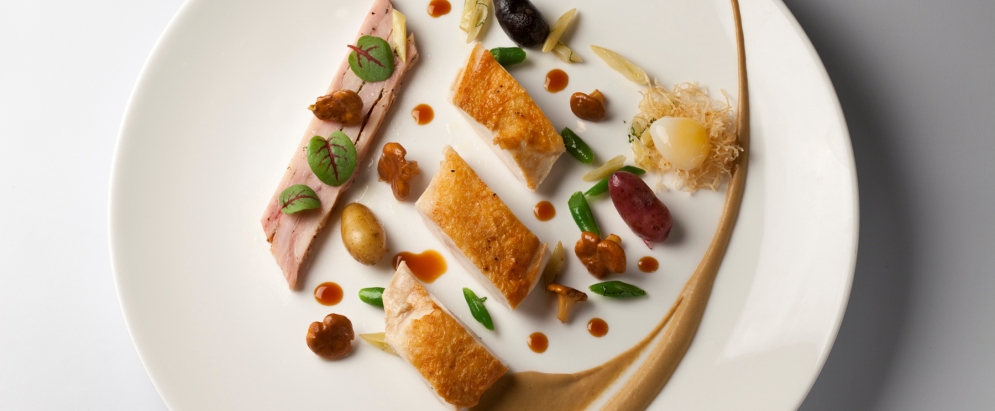 We
were seated at a comfortable corner table, and, when my
wife asked if the a/c blower could be turned down, it
was immediately. The crowd at Aureole, as is the
clientele of places like Le Cirque, Le Bernardin,
Jean-Georges, and The Four Seasons, well mannered and,
almost across the room, well dressed (except perhaps for
the oddly dressed, strange man at another table who
suddenly got up from his chair, pointed his finger at
his tablemates, screamed something and stormed out,
leaving the rest of the guests looking perplexed.)
Most men wore jackets. All the service staff, led
by manager Charles Pouchot, wore suits and
ties. So should you.
We
were seated at a comfortable corner table, and, when my
wife asked if the a/c blower could be turned down, it
was immediately. The crowd at Aureole, as is the
clientele of places like Le Cirque, Le Bernardin,
Jean-Georges, and The Four Seasons, well mannered and,
almost across the room, well dressed (except perhaps for
the oddly dressed, strange man at another table who
suddenly got up from his chair, pointed his finger at
his tablemates, screamed something and stormed out,
leaving the rest of the guests looking perplexed.)
Most men wore jackets. All the service staff, led
by manager Charles Pouchot, wore suits and
ties. So should you.
Aureole has had a series of excellent
chefs de cuisine, beginning with Christopher Lee, and
Gleadow-Ware is among the best of them. Palmer's
considerable empire of restaurants and hotels (he lives
in Healdsburg, CA) keeps him puddle-jumping, but his
authority is palpable at his flagship in NYC.
Good bread is not yet a given in NYC
restaurants, but Aureole's is superb, with choices
of airy focaccia and wheaty baguettes, along with
excellent butter. Our amuse bouche was a bit of peekytoe
crab with creamy avocado, tomato and aïoli, just
enough to set the appetite. My first course was a
terrine of Hudson Valley foie gras with kumquat, a base
of hazelnut and pistachios for crunch, and tangy pickled
radish that cut the richness of the perfect duck liver,
served with buttery brioche. My wife chose a dish of
velvety morsels of rabbit with ricotta gnudi, sweet
peas, carrots, mousserons, and a thin slicing of
prosciutto--as wonderful an assemblage of subtly
flavored ingredients as one could wish for.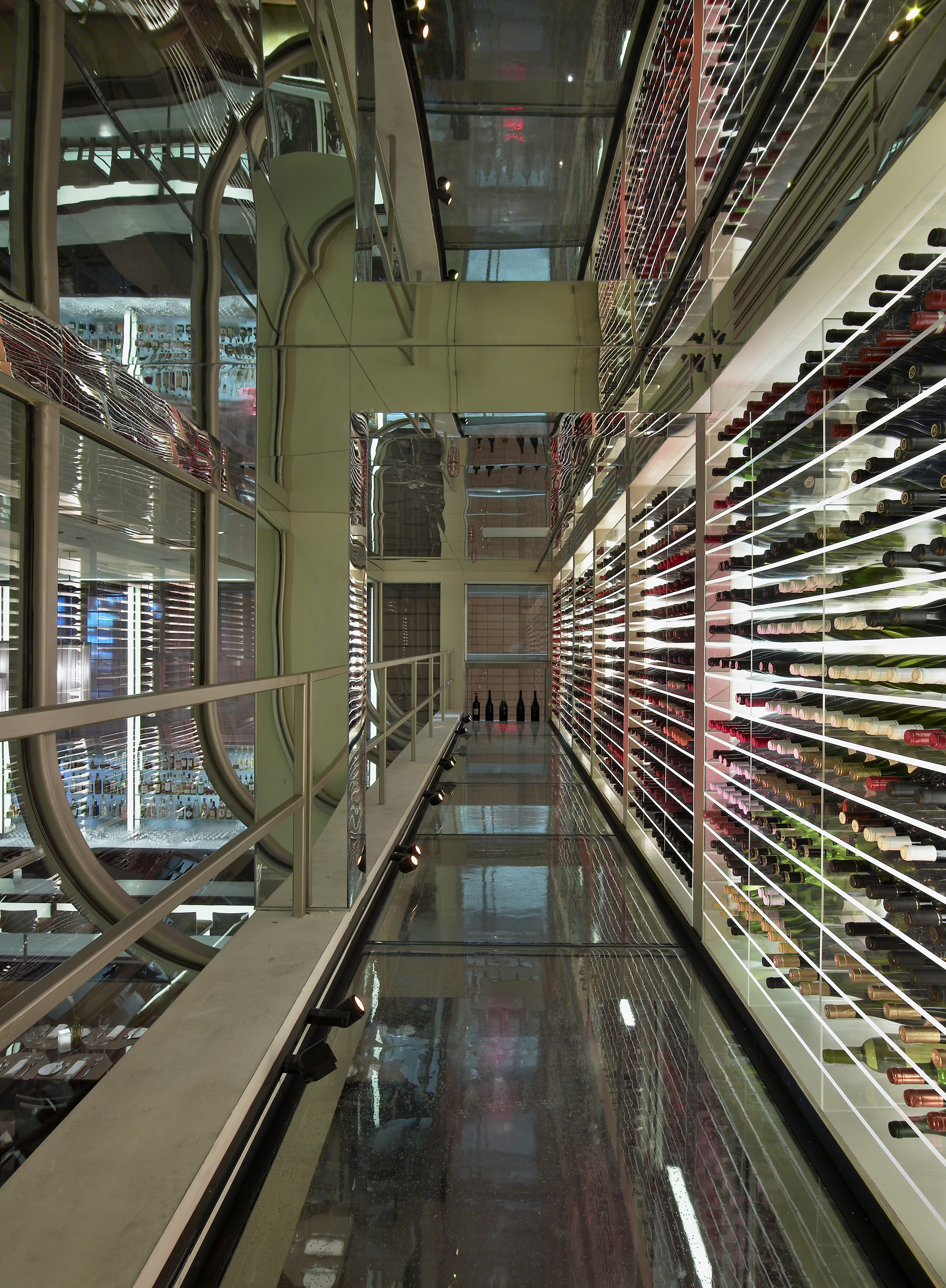
Next
came caramelized sea scallops (the bays are not yet
coming in) cooked to a fine point of near translucence,
cuddled in red peppers, zucchini, a tender razor clam,
ramp vinaigrette, and "Siberian sturgeon caviar," which
actually comes from Florida. A beautifully cooked,
lustrous Alaskan black cod of supreme delicacy was
served with bok choy, baby turnips, pickled pearl onions
and yuzu dashi vinaigrette (there's always an acid
balance in every dish). Butter-poached lobster was
a little chewy, served with saffron-braised fennel,
cauliflower, and a Macadamia nut gremolata.
Our desserts, by Pierre Poulin, were
a vacherin that was as delicate and crisp as any I can
recall, with chocolate, coffee meringue and dulcey
mousse, and a sticky toffee pudding with pecan nuts and
Maker's Mark bourbon ice cream. The pudding might
have been a little stickier and a little sweeter.
My wife and I toasted our happy life
together with the last of the burgundy, sat back and
wished we had a pied-à-terre in the city.
For many years, before it closed, we
had spent every anniversary dinner at the Lutèce,
which was a great French restaurant of another era. I
miss Lutèce very much, but I can do nothing but
smile at the prospect of beginning a long, long series
of annual visits to Aureole in the future. If the word
"refinement" has any meaning left at all in modern life,
Aureole, sitting right where it is in the center of the
world's greatest city, epitomizes that meaning as well
as any restaurant in New York right now. A quarter
century of evolution has only made it better.
Aureole is open for Lunch
Mon.-Sat., Dinner nightly; Fixed price dining room
dinner, $89; five-course tasting menu $118; "Bubbles
after Broadway" Menu Mon.-Sat. 10 PM-11:30 PM.
 DO TRY THIS
AT HOME!
DO TRY THIS
AT HOME!
Cuisine R-EVOLUTION now
sells an introductory molecular gastronomy kit
($58.95) that "enables users to create and serve
avant-garde presentations such as balsamic
vinegar pearls, soy sauce foam, chocolate
spaghetti, tzatziki spheres and mint caviar
beads that burst in the mouth. The
all-encompassing kit contains all of the tools
needed to experiment with the most popular
techniques of molecular gastronomy," including
5 food additives of Agar
Agar, Calcium Lactate, Alginate, Xanthan
Gum, and Soy
Lecithin, along with 5 pipettes, 1
slotted spoon, 1 set of measuring spoons,
1 food grade syringe, 3 silicone tubes,
and 1 DVD of 50 recipes.
DEPARTMENT
OF ASIAN DECADENCE,
BIG
MELONS DIVISION
In
Tokyo a pair of 8-pound Yubari
melons, which
are considered a status symbol in Japan sold at auction
for
1.6 million yen ($15,730).
Any of John Mariani's
books below may be ordered from amazon.com.
 |
My latest book, which just won the prize for best book from International Gourmand, written with Jim Heimann and Steven Heller, Menu Design in America, 1850-1985 (Taschen Books), has just appeared, with nearly 1,000 beautiful, historic, hilarious, sometimes shocking menus dating back to before the Civil War and going through the Gilded Age, the Jazz Age, the Depression, the nightclub era of the 1930s and 1940s, the Space Age era, and the age when menus were a form of advertising in innovative explosions of color and modern design. The book is a chronicle of changing tastes and mores and says as much about America as about its food and drink.
“Luxuriating vicariously in the pleasures of this book. . . you can’t help but become hungry. . .for the food of course, but also for something more: the bygone days of our country’s splendidly rich and complex past. Epicureans of both good food and artful design will do well to make it their coffee table’s main course.”—Chip Kidd, Wall Street Journal.
“[The menus] reflect the amazing craftsmanship that many restaurants applied to their bills of fare, and suggest that today’s restaurateurs could learn a lot from their predecessors.”—Rebecca Marx, The Village Voice. |
"Eating Italian will never be the same after reading John Mariani's entertaining and savory gastronomical history of the cuisine of Italy and how it won over appetites worldwide. . . . This book is such a tasteful narrative that it will literally make you hungry for Italian food and arouse your appetite for gastronomical history."--Don Oldenburg, USA Today. "Italian
restaurants--some good, some glitzy--far
outnumber their French rivals. Many of
these establishments are zestfully described
in How Italian Food Conquered the World, an
entertaining and fact-filled chronicle by
food-and-wine correspondent John F.
Mariani."--Aram Bakshian Jr., Wall Street
Journal.
"Equal parts
history, sociology, gastronomy, and just
plain fun, How Italian Food Conquered the
World tells the captivating and delicious
story of the (let's face it) everybody's
favorite cuisine with clarity, verve and
more than one surprise."--Colman Andrews,
editorial director of The Daily
Meal.com. "A fantastic and fascinating
read, covering everything from the influence
of Venice's spice trade to the impact of
Italian immigrants in America and the
evolution of alta cucina. This book will
serve as a terrific resource to anyone
interested in the real story of Italian
food."--Mary Ann Esposito, host of PBS-TV's
Ciao
Italia. "John Mariani has written the
definitive history of how Italians won their
way into our hearts, minds, and
stomachs. It's a story of pleasure over
pomp and taste over technique."--Danny Meyer,
owner of NYC restaurants Union Square Cafe,
Gotham Bar & Grill, The Modern, and
Maialino.
|
 |
 |
 |
 |
 |
 |
 |
 |
 Everett Potter's Travel Report:
Everett Potter's Travel Report: 
 Eating Las Vegas
is the new on-line site for Virtual Gourmet
contributor John A. Curtas., who since 1995
has been commenting on the Las Vegas food
scene and reviewing restaurants for Nevada
Public Radio. He is also the
restaurant critic for KLAS TV, Channel 8 in
Las Vegas, and his past reviews can be
accessed at KNPR.org.
Click on the logo below to go directly to
his site.
Eating Las Vegas
is the new on-line site for Virtual Gourmet
contributor John A. Curtas., who since 1995
has been commenting on the Las Vegas food
scene and reviewing restaurants for Nevada
Public Radio. He is also the
restaurant critic for KLAS TV, Channel 8 in
Las Vegas, and his past reviews can be
accessed at KNPR.org.
Click on the logo below to go directly to
his site.

Tennis Resorts Online: A Critical Guide to the World's Best Tennis Resorts and Tennis Camps, published by ROGER COX, who has spent more than two decades writing about tennis travel, including a 17-year stretch for Tennis magazine. He has also written for Arthur Frommer's Budget Travel, New York Magazine, Travel & Leisure, Esquire, Money, USTA Magazine, Men's Journal, and The Robb Report. He has authored two books-The World's Best Tennis Vacations (Stephen Greene Press/Viking Penguin, 1990) and The Best Places to Stay in the Rockies (Houghton Mifflin, 1992 & 1994), and the Melbourne (Australia) chapter to the Wall Street Journal Business Guide to Cities of the Pacific Rim (Fodor's Travel Guides, 1991).


MARIANI'S VIRTUAL GOURMET
NEWSLETTER is published weekly. Editor/Publisher: John
Mariani.
Contributing Writers: Christopher Mariani, Robert Mariani,
John A. Curtas, Edward Brivio, Mort Hochstein,
Suzanne Wright, and Brian Freedman. Contributing
Photographers: Galina Stepanoff-Dargery,
Bobby Pirillo. Technical Advisor: Gerry McLoughlin.
© copyright John Mariani 2013
